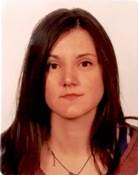- Imprimer
- Partager
- Partager sur Facebook
- Partager sur X
- Partager sur LinkedIn
Soutenance
Le 24 janvier 2020
Saint-Martin-d'Hères - Domaine universitaire

Impact of meso-scale heterogeneities on the mechanical behaviour of concrete: insights from in-situ x-ray tomography and E-FEM modelling
This doctoral thesis investigates the impact of the meso-scale heterogeneities of concrete (aggregates and macro-pores) on its macroscopic mechanical response. A combined numerical and experimental approach is adopted to study the progressive evolution of the 3D fracturing processes of micro-concrete specimens under uniaxial tension, uniaxial compression and triaxial compression.
Part of the originality of this work lies in the exploration of multiple loading paths on concrete samples of realistic composition (including cement, sand, aggregates and water) and in the in-situ nature of the experiments conducted. The experimental campaign is performed inside an x-ray scanner, which allows the internal structure of the material to be non-destructively captured and its evolution from the intact (before loading) until the damaged (after unloading) state to be followed and quantified. The 3D images coming from the x-ray scans are first analysed in order to quantitatively describe the morphology of the meso-structure (aggregates, mortar matrix and macro-pores). A timeseries analysis of the set of 3D images coming from each in-situ test follows, which allows for the measurement of the 3D kinematic fields (displacement and strain fields) throughout the experiments.
On the numerical side, the identified morphologies coming from the intact x-rays scans are given as an input to a FE meso-model with enhanced discontinuities. The originality of the numerical simulations comes from their 3D nature and the consideration of the actual meso-structure of the micro-concrete specimens, based on the segmentation of the three phases of the material. After a calibration of the model in uniaxial tension, its predictive ability is challenged under different stress paths in compression. An extensive comparison is presented between experimental and numerical observations, in terms of macroscopic responses, displacement fields, fracturing processes and failure patterns. The typical asymmetric behaviour of concrete in tension and compression, as well as the increase of strength and ductility with the increase of confinement are sufficiently captured numerically. Starting from an x-ray scan, it is shown that the model is able to satisfactorily Sreproduce some of the basic characteristic features of the failure modes observed experimentally for the different loading paths studied.
While validating the numerical results and through a combination of numerical and experimental observations, the significant impact of the meso-scale heterogeneities on the local failure mechanisms is revealed. It is shown that, for the studied material, the shape and location of the largest aggregates and macro-pores are essentially driving the fracture patterns under simple tension, simple compression and triaxial compression. The good correspondence between experiments and model strongly suggests that the explicit representation of these heterogeneities is the key feature that allows the predictive power of the model. A further insight into the impact of the meso-structure is obtained by investigating virtual concrete morphologies, generated by modifying the real meso-structures coming from the x-ray scans.
Jury
Julien YVONNET, Professeur, Université Paris-Est Marne-la-Vallée, Rapporteur
Camille CHATEAU, Chargée de Recherche, École des Ponts ParisTech, Examinatrice
Jean-Baptiste COLLIAT, Professeur, Université de Lille, Examinateur
Ryan HURLEY, Assistant Professor, Johns Hopkins University, Examinateur
Yann MALECOT, Professeur, Université Grenoble Alpes, Directeur de thèse
Edward ANDÒ, Ingénieur de Recherche, CNRS, Co-encadrant de thèse
Emmanuel ROUBIN, MCF, Université Grenoble Alpes, Co-encadrant de thèse
Date
à 10h30
Localisation
Saint-Martin-d'Hères - Domaine universitaire
Amphi Wilfrid Kilian - OSUG/ISTerre

- Imprimer
- Partager
- Partager sur Facebook
- Partager sur X
- Partager sur LinkedIn